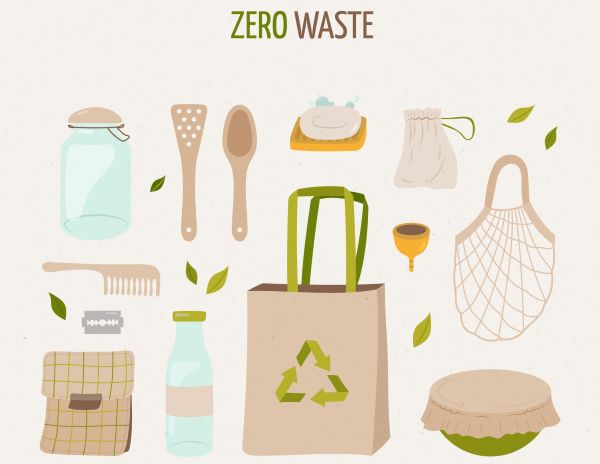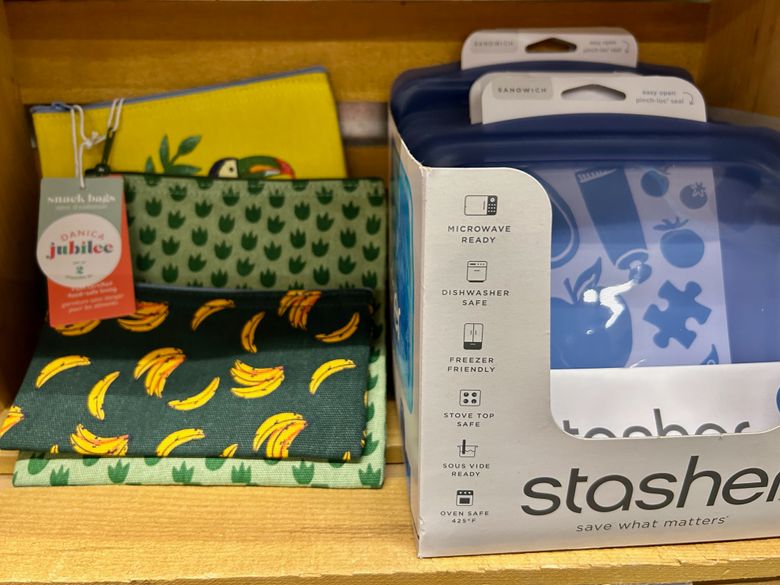Transitioning to a sustainable lifestyle can often feel daunting, especially when it comes to reducing plastic use in daily routines. To ease the burden, author Melanie Mannarino, known for her book The Almost Zero Waste Guide, offers advice on making incremental changes in the kitchen. By focusing on a few key areas, anyone can make a significant positive impact on the environment without overhauling their entire routine.
Start Small with Easy Changes
Mannarino emphasizes the importance of easing into sustainable habits by starting with manageable swaps. For instance, rather than relying entirely on disposable plastic bags for leftovers, consider using reusable containers or compostable sandwich bags. “In my kitchen, I always put leftovers in bowls while my husband tends to use plastic bags,” Mannarino shares. By encouraging the use of bowls and exploring compostable options, individuals can take immediate steps toward sustainability.
These small changes can provide an uplifting sense of accomplishment, motivating further eco-friendly adjustments. “When you tackle what feels doable first, you get that feel-good win that inspires you to keep going,” she adds.
However, Mannarino acknowledges that eliminating some habits entirely can be challenging, particularly when it comes to items like paper towels. “I’ll admit: I still have paper towels in my kitchen,” she says. Instead, she has made other shifts such as opting for glass storage containers, silicone zipper bags, and reusable baking mats. “Cutting back is better than nothing,” she notes, suggesting alternatives like dish towels, Swedish dishcloths, and even reusable paper towels to supplement traditional options.
Rethink Reusable Items

To further minimize waste, Mannarino encourages looking at familiar items with a fresh perspective. Many objects can be repurposed instead of discarded. “Glass condiment jars that once held mustards, olives, and jams can be washed and repurposed for homemade salad dressings and marinades, or your own pickled vegetables,” she explains.
Additionally, worn-out plastic food storage containers that may have lost their lids can find new life. Mannarino suggests using these containers to organize first aid supplies, sunscreens, or even loose hardware like nails and screws. This approach not only reduces waste but also maximizes the utility of existing items.
Focus on Frequent Use Items

Assessing which products are used most often can help identify effective areas for change. For example, those who frequently sip beverages through straws might benefit from investing in a set of glass straws. Making eco-conscious swaps in commonly used items can lead to more substantial environmental impacts.
Mannarino shares her personal experience with sparkling water, stating, “There’s no beverage I love more than seltzer. After years of buying case after case of 1-liter plastic bottles, I jumped on the at-home seltzer-maker trend.” She acknowledges that while purchasing a new appliance may seem counterintuitive, the long-term benefits far outweigh the initial investment. “The amount of plastic bottles I’ve avoided buying in that time could probably fill my entire house,” she remarks proudly.
Utilize Existing Plastics Responsibly
Instead of discarding all plastic storage containers in an effort to go green, Mannarino suggests using them until they reach the end of their usable life. “Unless a plastic container is compromised to the point where it’s a food safety concern, don’t suddenly throw everything in the trash,” she advises. This practice prevents unnecessary landfill accumulation and embraces the principle of sustainability.
While it’s important to replace plastics with eco-friendly alternatives when feasible, understanding local recycling rules is crucial. Many containers may not be recyclable, which reinforces the importance of using what you already have as long as possible.
Conclusion
By taking manageable steps toward reducing plastic consumption in the kitchen, individuals can significantly contribute to a more sustainable lifestyle. Embracing small changes, repurposing items, and thoughtfully utilizing existing materials are practical strategies highlighted by Melanie Mannarino that empower everyone to become more environmentally conscious without feeling overwhelmed.
